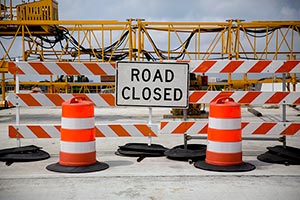Analysis: A Smarter Approach to Infrastructure

When the American Society of Civil Engineers published its latest Infrastructure Report Card last month, the results were sobering: a grade of D+ for the U.S. and an estimated price tag of $4.6 trillion to make needed repairs by 2025.
Such shortcomings have gotten widespread coverage in recent years, with images of Amtrak derailments, crumbling highways and the damaged Oroville Dam vividly illustrating the costs inflicted by decades of underinvestment.
So far, though, Congress has been unable to come up with a sustainable model for funding necessary improvements. President Donald Trump wants to spur $1 trillion of investment by relying on tax credits and public-private partnerships. Senate Democrats have announced their own $1 trillion program, with more conventional federal appropriations aimed at repairing roads, bridges, railways and water systems.
Yet even if these proposals could be enacted, they wouldn't be sufficient. Due to continual pressure on federal and state budgets, new and more reliable sources of funding are needed.
One promising solution is for states or regional economic zones to lead the way by creating their own infrastructure banks, modeled on successful development banks in other countries. The Northeast has taken the first step, with Massachusetts filing bills in January to establish a state infrastructure bank and examine a regional one. This model could be easily replicated across the United States to accelerate investment and economic activity.
How would it work? Taking the Northeast as an example, states from Massachusetts to Maryland could create a jointly owned entity capable of financing critical projects, including those that cross borders. Each state would contribute part of the initial equity, which could then be leveraged with private debt to invest in revenue-producing projects. The equity could be boosted through annual contributions from state transportation budgets — or from other sources — with every new dollar having a multiplier effect.
This approach has several benefits. Projects could be funded on a portfolio basis, with excess cash flow from one investment subsidizing another. Smaller projects could be aggregated to create critical mass. And regional banks could become repositories of best practices, acting as centers of excellence for negotiating complex projects on behalf of taxpayers.
Perhaps more important, regional banks could draw investment from institutions such as pension funds and sovereign wealth funds that generally don't invest in the traditional municipal bond market. That would significantly expand the pool of available capital for infrastructure, while enabling bigger investments with longer maturities.
Regional banks wouldn't replace the states' role in issuing municipal bonds, or eliminate the need for federal dollars. Nor would they aim to privatize public assets. They would simply expand the universe of funding sources and viable projects, thereby boosting regional competitiveness.
This is a tried and tested model. The European Investment Bank, founded in 1958, last reported more than 450 billion euros in disbursed loans, about two-thirds of which were for infrastructure projects. In 2016, China launched the Asian Infrastructure Investment Bank, with $100 billion to help accelerate investment across developing Asia. Canada is creating a bank that will leverage C$35 billion in provincial funds with private capital to pay for domestic construction.
Although the United States attempted to create a National Infrastructure Bank, the legislation stalled in Congress. And our current approach to funding is too fragmented and politically fraught to make transformative investments. By seizing this opportunity, the U.S. could mobilize capital to finally invest in infrastructure for the 21st century — creating high-paying jobs and boosting economic growth in the process. States can lead the way by seeing beyond their borders, and investing in a more prosperous future.




